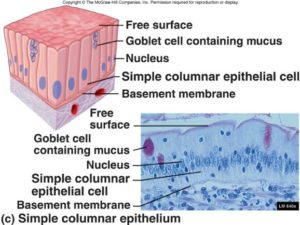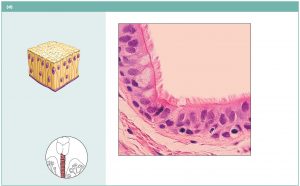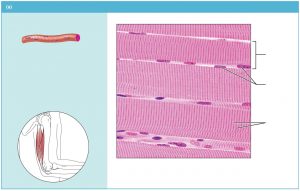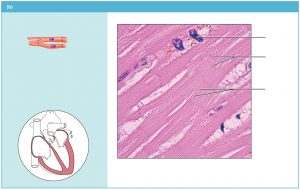Virtual Laboratory Objectives
Instructor: Dr. Clare Hays, SI 2032; 303-615-0777, e-mail – [email protected], URL http://sites.msudenver.edu/haysc
Books and Supplies:
- Required: Your textbook is for online or lecture: Seeley’s Anatomy & Physiology, 12th Ed.,by Van Putte, Regan and Russo including access to Mc-Graw Hill Connect;
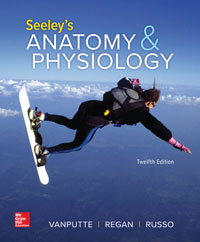
2.Required: Your lab manual : Human Anatomy and Physiology Laboratory Manual, 12th Ed., Elaine N. Marieb 
NOTE: There will be postings with tips for each week’s lab on Canvas through MSU Denver’s Student Hub.
All Exercise and Activity numbers listed below refer to the Marieb Lab Manual.
WEEK 1, JANUARY 19-24 – HISTOLOGY
Exercise 6 in Marieb Manual: Observe and be able to identify the following tissue types. Lab exam questions consist of identification of these tissues. APR in Connect has a specific list of histology photos located in Anatomy & Physiology Revealed, My Course Content, List (Histology course content code: 3LmRE) and Module-Histology. Here is a link on how to use Anatomy and Physiology Revealed (APR): https://myclasses.tegrity.com/#/recording/83b7d082-414d-4624-aea2-100a525fc872?playbackToken=2PB0NHGHYZZNY
Epithelium
Identify: Simple squamous epithelium and Simple cuboidal epithelium. 

Identify: Simple columnar epithelium.
Identify: Stratified squamous epithelium.
Identify: Transitional epithelium.
Identify: Pseudostratified columnar epithelium. Note the cilia.
Connective tissue
Identify: Areolar (loose) connective tissue.
Identify: Adipose tissue.
Identify:Dense (fibrous) regular connective tissue.
Identify: Hyaline cartilage.
Identify: Bone.
Nervous tissue
Identify: Nervous tissue.
Muscle tissue
Identify: Skeletal muscle.
Identify: Cardiac muscle.
Identify: Smooth muscle.
Note: There is nothing to hand in or submit when you do the Histology lab. In fact, this is the case for most of the labs. The only lab items that will contribute to your grade are the 3 lab exams and the virtual labs that you begin during week 10.
WEEKS 2, 3, 4, JANUARY 25-FEBRUARY 14 – SKELETAL SYSTEM (ANATOMY)
Recommended time schedule: Week 2 – Through the skull; Week 3 – through the upper extremity; Week 4 – finish and review.
Exercise 8 in Marieb Lab Manual: Please refer to Table 8.1 in lab manual as needed for bony features definitions.
Exercise 9 in Marieb Lab Manual: AXIAL SKELETON – You are responsible for the following:
AXIAL SKELETON: SKULL
Gross Anatomy: Before you find the structures listed below in Anatomy and Physiology Revealed in Connect, watch the help videos so that you are familiar with APR. Once you click on APR, there is a question mark “need help” tab. Click that and then choose “select help video.” I suggest watching the Program Overview, My Course Content, and Dissection help videos. Here is a link on how to use Anatomy and Physiology Revealed (APR): https://myclasses.tegrity.com/#/recording/83b7d082-414d-4624-aea2-100a525fc872?playbackToken=2PB0NHGHYZZNY
CRANIAL BONES: (Note: Terms in all capital letters are the bones and terms following them are features on that bone.) Observe and be able to identify the following skull features. Lab exam questions consist of identification of these features. APR in Connect has a specific list of skull photos and models located in Anatomy & Physiology Revealed, My Course Content, List (Skull course content code: XG3jt) and Module-Skeletal.
FRONTAL (1), Supraorbital foramen (or notch), Glabella, PARIETAL (2), Sagittal suture, Coronal suture, TEMPORAL (2), Squamous suture, Zygomatic process, Mandibular fossa, External auditory (=acoustic) meatus (=canal), Styloid process, Mastoid process, Stylomastoid foramen, Jugular foramen, Carotid canal, Internal auditory (=acoustic) meatus (=canal), OCCIPITAL (1), Lambdoid suture, Foramen magnum, Occipital condyles, Hypoglossal canal, External occipital protuberance, SPHENOID (1), Greater wings, Superior orbital fissures, Sella turcica, Lesser wings, Optic foramina or canals, Foramen rotundum, Foramen ovale, Foramen lacerum, Foramen spinosum, ETHMOID (1), Crista galli, Cribriform plates with olfactory (=cribriform) foramina, Perpendicular plate, Superior and middle nasal conchae (These nasal conchae, along with inferior nasal conchae make up the “turbinates.”).
FACIAL BONES:
MANDIBLE (1), Body, Rami (sing. ramus), Mandibular condyle, Coronoid process, Angle, Mental foramina, Mandibular foramen, Alveolar processes or margins, MAXILLA (2), Alveolar processes or margins, Palatine processes, Infraorbital foramen, PALATINE (2), ZYGOMATIC (2), LACRIMAL (2), Nasolacrimal canals for ducts, NASAL (2), VOMER (1), INFERIOR NASAL CONCHAE (2).
HYOID BONE.
Frontal sinus, Ethmoidal sinuses, Sphenoidal sinus, Maxillary sinus.
Observe the fontanels (soft spots) on the fetal skeleton.
AXIAL SKELETON: VERTEBRAE, STERNUM and RIBS:
(Note: Terms in all capital letters are the bones and terms following them are features on that bone.) Observe and be able to identify the following axial skeleton features. Lab exam questions consist of identification of these features. APR in Connect has a specific list of vertebrae, sternum and rib photos and models located in Anatomy & Physiology Revealed, My Course Content, List (Vertebrae Sternum Ribs course content code: QdMTF) and Module-Skeletal.
TYPICAL VERTEBRA, Body, Vertebral arch, Vertebral foramen, Transverse processes, Spinous process, Superior and inferior articular processes with smooth articular surfaces called facets, Intervertebral foramina, intervertebral discs.
CERVICAL VERTEBRAE (7), atlas, axis, odontoid process (= dens), THORACIC VERTEBRAE (12), LUMBAR VERTEBRAE (5), SACRUM (5 fused sacral vertebrae), COCCYX (3-5 fused).
STERNUM, Manubrium, Body, Xiphoid process, Jugular notch, Sternal angle.
RIBS, True ribs, False ribs, Floating ribs, Costal cartilage.
Exercise 10: APPENDICULAR SKELETON – You are responsible for the following:
APPENDICULAR SKELETON: PECTORAL GIRDLE and PECTORAL APPENDAGE
(Note: Terms in all capital letters are the bones and terms following them are features on that bone.) Observe and be able to identify the following pectoral features. Lab exam questions consist of identification of these features. APR in Connect has a specific list of pectoral girdle and pectoral appendage photos and models located in Anatomy & Physiology Revealed, My Course Content, List (Pectoral Girdle Appendage course content code: Rk3c5) and Module-Skeletal.
PECTORAL GIRDLE: CLAVICLE, SCAPULA, Acromion process, Coracoid process, Glenoid fossa [cavity], Scapular spine, Supraspinous fossa, Infraspinous fossa, Subscapular fossa.
PECTORAL APPENDAGE: HUMERUS, Head, Shaft, Greater and lesser tubercles, Intertubercular (=bicipital) groove (sulcus), Deltoid tuberosity, Trochlea, Capitulum, Medial and lateral epicondyles, Coronoid fossa, Olecranon fossa, RADIUS, Head, Radial tuberosity, Styloid process, ULNA, Coronoid process, Olecranon (process), Semilunar (=trochlear) notch, Styloid process, CARPAL BONES (8), METACARPALS (I-V), PHALANGES (Proximal, Middle, Distal).
APPENDICULAR SKELETON: PELVIC GIRDLE and PELVIC APPENDAGE
(Note: Terms in all capital letters are the bones and terms following them are features on that bone.) Observe and be able to identify the following pelvic features. Lab exam questions consist of identification of these features. APR in Connect has a specific list of pelvic girdle and pelvic appendage photos and models located in Anatomy & Physiology Revealed, My Course Content, List (Pelvic Girdle Appendage course content code: qJczj) and Module-Skeletal.
PELVIC GIRDLE: OS COXA (Coxal bone when 3 parts are fused), ILIUM, Sacroiliac joint, Iliac crest, Anterior superior spine, Posterior superior spine, Anterior inferior spine, Posterior inferior iliac spine, Iliac fossa, ISCHIUM, Ischial tuberosity, Lesser and greater sciatic notches, Ischial ramus, PUBIS, Obturator foramen, Pubic symphysis, Pubic ramus, Acetabulum.
PELVIC APPENDAGE: FEMUR, Head, Greater and lesser trochanters, Lateral and medial condyles, Lateral and medial epicondyles, Gluteal tuberosity, Linea aspera, PATELLA, TIBIA, Medial and lateral condyles, Tibial tuberosity, Medial malleolus, FIBULA, Lateral malleolus, TARSAL BONES (7), Calcaneus, Talus, METATARSALS (I-V), PHALANGES (Proximal, Middle, Distal).
WEEK 5, FEBRUARY 15-21 (at 11:59 pm) – EXAM 1
(25 questions, 50 points)
You will have 45 minutes in one sitting to complete this lab exam online in Connect. You will find it in the Lab Unit 1 Tab. It consists of labeling and multiple choice questions from the tissues, bones and bony features listed above. Read the questions carefully, because a few have multiple answers. There will be a 5% deduction for every day past the due date that you complete the exam.
WEEK 6, 7, 8, FEBRUARY 22- MARCH 14 – MUSCULAR SYSTEM ANATOMY
Observe and be able to identify the following muscles. Lab exam questions consist of identification of these features. You have 3 weeks to learn these muscles. Suggested timelines below. First week: Complete Muscles of the head, trunk and back. APR in Connect has a specific list of muscles photos and models located in Anatomy & Physiology Revealed, My Course Content, List (Muscles head trunk back course content code: KbMaE) and Module-Muscular.
MUSCLES OF FACIAL EXPRESSION: Orbicularis oris, Orbicularis oculi, Zygomaticus major, Buccinator, Platysma, Frontalis, Occipitalis.
MUSCLES OF MASTICATION: Masseter, Temporalis, Digastric.
MUSCLE THAT MOVE THE HEAD: Sternocleidomastoid, Splenius capitis.
MUSCLES OF THE ABDOMINAL WALL: External abdominal oblique, Internal abdominal oblique, Transversus abdominis, Rectus abdominis.
MUSCLES USED IN BREATHING: Diaphragm, External intercostals, Internal intercostals.
MUSCLES THAT MOVE THE VERTEBRAL COLUMN: Erector spinae.
Second week: Complete Muscles of the pectoral girdle and appendage. APR in Connect has a specific list of muscle photos and models located in Anatomy & Physiology Revealed, My Course Content, List (Muscles Pectoral course content code: HLZDt) and Module-Muscular.
MUSCLES THAT MOVE THE SHOULDER: Serratus anterior, Pectoralis minor, Rhomboideus major, Trapezius.
MUSCLES THAT MOVE THE ARM: Pectoralis major, Latissimus dorsi, Deltoid, Supraspinatus, Infraspinatus, Subscapularis, Teres major, Teres minor.
MUSCLES THAT MOVE THE FOREARM: Biceps brachii, Brachialis, Triceps brachii (long, lateral and medial heads).
MUSCLES THAT MOVE THE WRIST AND FINGERS: Flexor carpi radialis, Flexor carpi ulnaris, Palmaris longus, Flexor digitorum superficialis, Extensor carpi radialis (longus), Extensor carpi ulnaris, Extensor digitorum.
Third week: Complete Muscles of the pelvic girdle and appendage. APR in Connect has a specific list of muscles photos, models and animations located in Anatomy & Physiology Revealed, My Course Content, List (Muscles Pelvic course content code: qEcjE) and Module-Muscular.
MUSCLES THAT MOVE THE THIGH: Gluteus maximus, Gluteus medius, Gluteus minimus, Tensor fasciae latae, Adductor longus, Adductor magnus, Adductor brevis .
MUSCLES THAT ACT ON THE LEG: Quadriceps femoris (including Rectus femoris, Vastus lateralis, Vastus medialis, Vastus intermedius), Hamstrings (including Biceps femoris, Semitendinosus, Semimembranosus), Gracilis, Sartorius.
MUSCLES THAT MOVE THE FOOT AND TOES: Tibialis anterior, Extensor digitorum longus, Gastrocnemius, Soleus, Flexor digitorum longus.
WEEK 9, MARCH 15-21 (at 11:59 pm) – EXAM 2
(25 questions, 50 points)
You will have 45 minutes in one sitting to complete this lab exam online in Connect. You will find it in the Lab Unit 2 Tab. It consists of labeling and multiple choice questions from the muscles listed above. Read the questions carefully, because a few have multiple answers. There will be a 5% deduction for every day past the due date that you complete the exam.
WEEK 10, MARCH 29-APRIL 4 – MUSCULAR PHYSIOLOGY VIRTUAL LAB **NOTE TWO LAB ASSIGNMENTS ARE DUE THIS WEEK**
Use this time to complete the Virtual Labs Tutorial, which is due April 4 at 11:59 pm and worth 10 points for completion. After completing the tutorial, you can complete the Skeletal Muscle Electrical Stimulation Virtual Lab. Completion of this lab is worth 20 points and also due April 4. You will find the link under the Lab Unit 3 tab at the bottom of the Connect homepage. You have unlimited chances to do the virtual labs and you receive 100% for completion. However, they must be complete by the due date of April 4 at 11:59 pm. My view of your grades will only show your highest grade received for the virtual labs. The information from your virtual labs will not be on any lab tests.
WEEK 11, APRIL 5-11 – ANATOMY OF THE BRAIN AND CRANIAL NERVES
Exercise 15: Observe a microscope slide of a typical neuron.  See Figure 15.2.
See Figure 15.2.
HUMAN BRAIN:
Lab exam questions consist of identification of these brain features as well as histology of the neuron. APR in Connect has a specific list of brain photos, models, and histology located in Anatomy & Physiology Revealed, My Course Content, List (Brain and Cranial Nerves course content code: jRhtM) and Module-Nervous.
Exercise 17: Refer to Exercise 17 and identify the following:
Meninges: (including the Dura mater, arachnoid, pia mater).
Dorsal Structures: Longitudinal fissure, cerebrum, cerebral hemispheres, cerebellum, corpora quadrigemina (superior and inferior colliculi).
Ventral Structures: Olfactory bulbs (site where olfactory nerve (Cr. N. I) from nose synapses), optic nerves (Cr. N. II), optic chiasm, optic tracts, hypothalamus (infundibulum of pituitary gland, mammillary body), cerebral peduncles, oculomotor nerve (Cr. N. III), trochlear nerve (Cr. N. IV), trigeminal nerve (Cr. N. V), abducens nerve (Cr. N. VI), facial nerve (Cr. N. VII), vestibulocochlear nerve (=auditory nerve, Cr. N. VIII), glossopharyngeal nerve (Cr. N. IX), vagus nerve (Cr. N. X), accessory nerve (Cr. N. XI), and hypoglossal nerve (Cr. N. XII), pons, medulla oblongata,
Internal Structures: Corpus callosum, lateral ventricle, fornix, third ventricle, thalamus, hypothalamus, pineal body (gland), midbrain, cerebral aqueduct, fourth ventricle, cerebral peduncles, pons, medulla oblongata, and cerebellum.
WEEK 12, APRIL 12-18 – PERIPHERAL NERVES AND HUMAN REFLEXES **NOTE LAB ASSIGNMENT IS DUE THIS WEEK**
PERIPHERAL NERVES of the HUMAN:
Lab exam questions consist of identification of these peripheral nerves. APR in Connect has a specific list of peripheral nerve photos and models located in Anatomy & Physiology Revealed, My Course Content, List (Peripheral Nerves course content code: E9vF9) and Module-Nervous.
Exercise 19, Activity 3: Identifying the Major Nerve Plexuses and Peripheral Nerves.
Identify the following nerves of the Brachial Plexus: Musculocutaneous
nerve, Radial nerve, Median nerve, Ulnar nerve.
Identify the following nerves of the Lumbosacral Plexus: Femoral nerve and its superficial branch called the Saphenous nerve , Sciatic nerve.
HUMAN REFLEXES:
Complete the Virtual Lab on Monosynaptic Reflexes. Completion is due on April 18 at 11:59 pm and it is worth 20 points. You will find the link under the Lab Unit 3 tab at the bottom of the Connect homepage. You have unlimited chances to do the virtual labs and you receive 100% for completion. However, they must be complete by the due date of April 18 at 11:59 pm. My view of your grades will only show your highest grade received for the virtual labs. The information from your virtual labs will not be on any lab tests.
WEEK 13, APRIL 19-25 – SENSORY ANATOMY
Lab exam questions consist of identification of these sensory features. APR in Connect has a specific list of sensory photos and models located in Anatomy & Physiology Revealed, My Course Content, List (Sensory course content code: PczbR) and Module-Nervous.
VISION: Cornea, Sclera, Posterior chamber, Posterior cavity, Anterior chamber, Anterior Cavity, Choroid, Ciliary body, Iris, Pupil, Lens, Retina, Optic nerve (Cr. N. II).
HEARING: Tympanic membrane, Auditory tube, Cochlea, External acoustic meatus, Malleus, Incus, Stapes, Semicircular canals, Vestibulocochlear nerve (Cr. N. VIII).
WEEK 14, APRIL 26-MAY 2 (at 11:59 pm) – EXAM 3
(25 questions, 50 points)
You will have 45 minutes in one sitting to complete this lab exam online in Connect. It consists of the anatomy from the brain, nerves and sensory structures listed above. You will find it in the Lab Unit 3 Tab. It consists of labeling and multiple choice questions from the muscles listed above. Read the questions carefully, because a few have multiple answers. There will be a 5% deduction for every day past the due date that you complete the exam.

